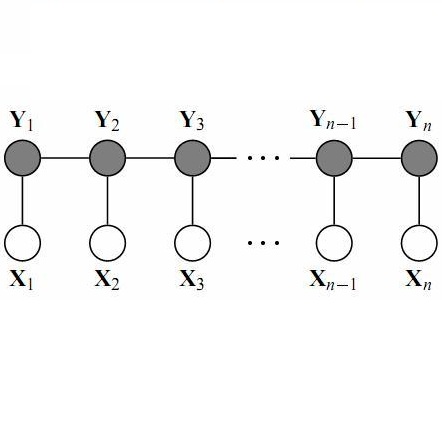Image segmentation is considered to be one of the critical tasks in hyperspectral remote sensing image processing. Recently, convolutional neural network (CNN) has established itself as a powerful model in segmentation and classification by demonstrating excellent performances. The use of a graphical model such as a conditional random field (CRF) contributes further in capturing contextual information and thus improving the segmentation performance. In this paper, we propose a method to segment hyperspectral images by considering both spectral and spatial information via a combined framework consisting of CNN and CRF. We use multiple spectral cubes to learn deep features using CNN, and then formulate deep CRF with CNN-based unary and pairwise potential functions to effectively extract the semantic correlations between patches consisting of three-dimensional data cubes. Effective piecewise training is applied in order to avoid the computationally expensive iterative CRF inference. Furthermore, we introduce a deep deconvolution network that improves the segmentation masks. We also introduce a new dataset and experimented our proposed method on it along with several widely adopted benchmark datasets to evaluate the effectiveness of our method. By comparing our results with those from several state-of-the-art models, we show the promising potential of our method.
翻译:超光谱遥感图像处理的关键任务之一,是图像的偏移。最近,进化神经网络(CNN)通过展示优异的性能,将自身确立为分化和分类的强大模型。使用像有条件随机字段这样的图形模型进一步有助于捕捉背景信息,从而改进分化性能。在本文中,我们提出了一个通过由CNN和通用报告格式组成的联合框架来考虑光谱和空间信息的超光谱图像分割方法。我们使用多个光谱立方体来学习使用CNN的深层特征,然后用CNN的单元和对称潜在功能来制定深度的通用报告格式,以有效提取由三维数据立方组成的交界之间的语义相关性。有效的拼图培训用于避免计算昂贵的迭代通用报告格式的推断性能。此外,我们引入了一个深度分解网络来改进分解面遮罩。我们还引入了一个新的数据集,并试验了我们就此提出的方法,以及若干广泛采用的基准数据集来评估我们的方法的有效性。通过比较我们从几个州模型中得出了我们有希望的方法。





